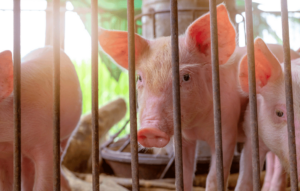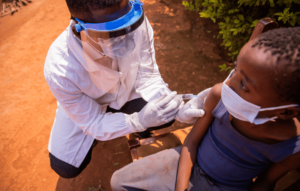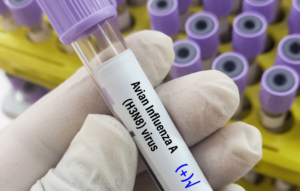In the recent few hundred years since the Industrial Revolution, humanity has been able to separate itself from nature to some extent. Today though, the boundaries between human health, animal health, and environmental well-being have become increasingly blurred and we’ve been forced to face the fact that we are a much more interconnected planet than many assume. From zoonotic diseases like COVID-19 to the impact of climate change on global health systems, it is evident that health challenges cannot be tackled in isolation. 
Recently, the Centers for Disease Control and Prevention (CDC) has stepped forward to publically acknowledge this complexity and advocate for what they call a One Health approach – an innovative framework that addresses the intertwined nature of human, animal, and environmental health.
This blog explores the essence of One Health, its real-world applications, and why this perspective is an essential step forward for public health in the 21st century.
What Is One Health?
The One Health approach is rooted in the understanding that the health of humans, animals, and ecosystems is closely connected. By fostering collaboration across multiple sectors – healthcare, veterinary sciences, environmental science, and public policy – One Health aims to achieve optimal health outcomes for all living beings.
Core Principles of One Health
- Interdisciplinary Collaboration: Encourages partnerships among diverse experts, from medical professionals to environmental scientists.
- Prevention Over Reaction: Focuses on proactive measures to mitigate health risks before they become widespread crises.
- Global and Local Engagement: Bridges the gap between localized health initiatives and broader global health strategies.
The CDC has been at the forefront of operationalizing these principles, working to unify efforts across disciplines and geographic boundaries.
Why One Health Matters Now More Than Ever
Zoonotic Diseases on the Rise
Over 60% of infectious diseases affecting humans originate from animals. From well-known illnesses like rabies to global pandemics such as the “swine flu” caused by the H1N1 virus strain, zoonotic diseases have demonstrated their ability to destabilize societies. Deforestation, urbanization, and wildlife trafficking exacerbate the risk of disease spillover from animals to humans. One Health offers a critical framework to monitor, prevent, and respond to these threats.
H1N1 virus strain, zoonotic diseases have demonstrated their ability to destabilize societies. Deforestation, urbanization, and wildlife trafficking exacerbate the risk of disease spillover from animals to humans. One Health offers a critical framework to monitor, prevent, and respond to these threats.
The Growing Problem of Antimicrobial Resistance (AMR)
Antibiotic overuse in both human healthcare and livestock farming has accelerated the emergence of antimicrobial resistance. Resistant pathogens, often originating in agricultural settings, can spread rapidly, making infections harder to treat. The One Health approach emphasizes responsible antibiotic stewardship across sectors, reducing the risk of AMR and preserving lifesaving treatments.
Environmental Health Challenges
Environmental changes, including pollution, deforestation, and climate change, are having profound effects on health. Rising temperatures can increase the spread of vector-borne diseases like malaria and dengue, while air and water pollution contribute to respiratory illnesses and other chronic conditions. By integrating environmental health into public health discussions, One Health provides a comprehensive way to address these challenges.

How the CDC Implements One Health
The CDC has adopted One Health as a cornerstone of its public health strategy. Through initiatives that bridge gaps between disciplines, the CDC aims to strengthen systems that monitor and respond to health threats.
Key Programs and Initiatives
- Global Disease Detection: Partnerships with international organizations like the World Health Organization (WHO) and the Food and Agriculture Organization (FAO) to track and contain zoonotic diseases.
- AMR Surveillance: Programs to reduce the misuse of antibiotics in agriculture and promote global monitoring of resistant pathogens.
- Climate and Health Surveillance: Research initiatives that examine how changing environmental conditions impact health outcomes, such as the spread of diseases like Lyme disease.
Case Studies: One Health in Action
- Ebola Outbreak Response: By integrating expertise from epidemiologists, veterinarians, and environmental scientists, the CDC helped to control the Ebola outbreak, partially by addressing its root causes in wildlife interactions.
- H5N1 Avian Influenza Monitoring: Collaborative surveillance programs have tracked and prevented outbreaks of bird flu, protecting both animal populations and human health.

Challenges to Implementing One Health
Despite its promising potential, the One Health approach faces several hurdles:
- Interdisciplinary Coordination: Aligning priorities across diverse fields requires significant effort, particularly in regions with limited resources.
- Funding Constraints: Many One Health initiatives rely on funding that has to be shared among various sectors, which can dilute their impact and increase the complexity of politics between factions.
- Public Awareness: The success of One Health depends on buy-in from policymakers and the public, both of which often lack awareness of its importance.
Addressing these challenges requires persistent advocacy and the development of clear policy frameworks.
What One Health Means for the Future of Public Health
One Health represents a significant paradigm shift in how we view and address global health challenges. By acknowledging the interconnectedness of human, animal, and environmental health, this approach has the potential to:
- Improve Disease Surveillance: Early detection and response to health threats across sectors can prevent pandemics.
- Foster Global Collaboration: By uniting countries and various disciplines of study, One Health can create a unified response to global health challenges.
- Promote Sustainable Practices: Encouraging environmentally friendly practices in agriculture and urban planning can reduce public health risks and improve quality of life in a variety of ways.

How You Can Support One Health
Individual Actions
- Advocate for policies and politicians that prioritize sustainable agriculture and environmental conservation.
- Practice antibiotic stewardship by using medications responsibly and supporting antibiotic-free farming.
- Raise awareness about the interconnectedness of health issues in your community.
Policy-Level Actions
- Support funding for One Health initiatives at local, national, and global levels.
- Encourage interdisciplinary education and training for professionals in healthcare, veterinary medicine, and environmental science.
Conclusion
The CDC’s One Health approach is not just a buzzworthy PR campaign – it represents the opportunity for society to develop an urgently needed reevaluation and response to the complexities of modern health challenges. By addressing the connections between people, animals, and the environment, One Health offers a new perspective on public health that is both practical and visionary.
As the world faces rising zoonotic diseases, the looming threat of antimicrobial resistance, and the far-reaching consequences of climate change, One Health stands as a reminder that no health challenge exists in isolation and that our world is incredibly interconnected. Supporting this approach is not just an investment in health – it’s a commitment to a sustainable and resilient future for all.










